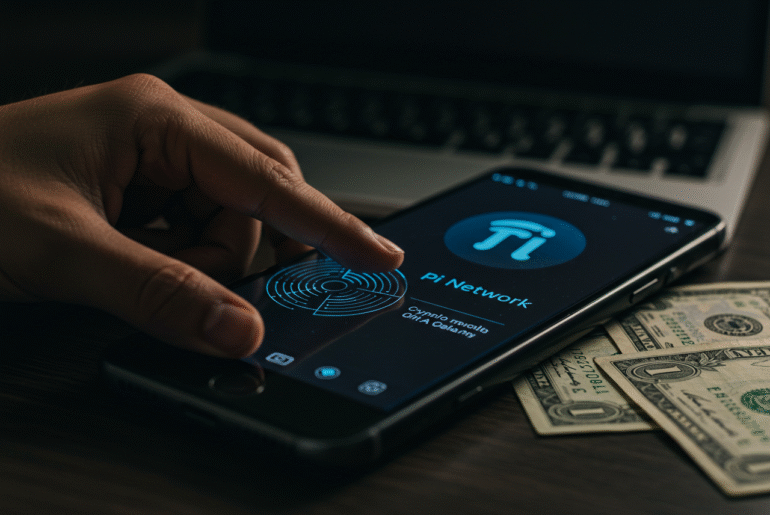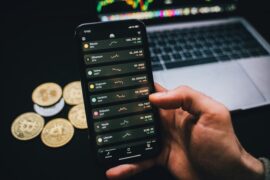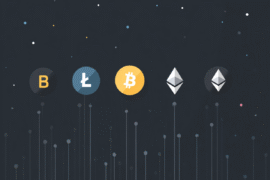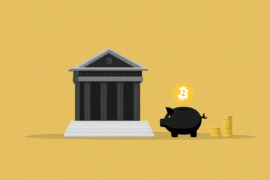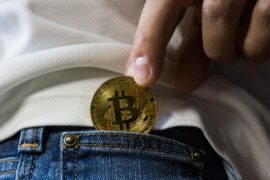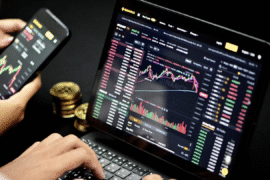This article may contain references to products or services from one or more of our advertisers or partners. We may receive compensation when you click on links to those products or services. Nonetheless, our opinions are our own.
The information presented in this article is accurate to the best of our knowledge at the time of publication. However, information is subject to change, and no guarantees are made about the continued accuracy or completeness of this content after its publication date.
- A Comparison of Digital and Fiat Currency
- What Is Pi Network?
- How to Use Pi Network and Convert to USD
- Basic Requirements to Start With Pi Network
- Steps to Start Using Pi and Exchanging to USD
- Market Behavior of Pi vs USD
- Trusted Sources for Pi/USD Charts
- Factors That Influence Pi’s Value Against USD
- Final Thoughts
- Frequently Asked Questions
- Recommended Reads
A Comparison of Digital and Fiat Currency
Digital currencies are revolutionizing the daily management of money. The Pi Network introduces a new form of cryptocurrency that operates through blockchain technology and mobile mining. In contrast, the US Dollar (USD) remains the most trusted and stable fiat currency worldwide. Comparing Pi Network and USD helps clarify how digital value is stored, transferred, and trusted. As Pi gains popularity, understanding these two monetary systems becomes increasingly important for users exploring digital finance.
What Is Pi Network?
Launched in 2019 by Stanford graduates Dr. Nicolas Kokkalis and Dr. Chengdiao Fan, Pi Network aims to make cryptocurrency mining accessible via mobile devices. The network uses community-based “security circles” for transaction verification, and users must complete Know Your Customer (KYC) procedures to access the full mainnet. As of August 2025, Pi is valued at $0.3535, with a market capitalization of $2.75 billion and 7.78 billion coins in circulation. While the network continues to expand, real-world adoption and practical usability are still developing, and the coin’s value remains volatile.
How to Use Pi Network and Convert to USD
To start, download the official Pi app and register with an invite code to join a mining team. Users mine Pi by tapping the mine button daily and increase rates by participating in security circles. Accumulated Pi coins may eventually be converted to USD depending on exchange availability. Staying updated on Pi announcements and KYC status is crucial. Due to the limited availability of official exchange options, some users turn to community trading or special events for conversion opportunities. Verifying the legitimacy of any trading platform is essential to avoid scams.
| Aspect | Pi Network | US Dollar (USD) |
|---|---|---|
| Type | Decentralized cryptocurrency | Centralized fiat currency |
| Launch Year | 2019 | Established over 200 years ago |
| Technology | Blockchain, mobile mining | Government-issued, regulated banking system |
| Control | Community consensus, no central authority | Controlled by the US Federal Reserve |
| Supply | Capped at 100 billion coins, halving rewards | No fixed limit, managed by monetary policy |
| Value Stability | Highly volatile, market-driven | Relatively stable, backed by government |
| Accessibility | Mobile app, easy to mine on smartphones | Widely accepted, cash and digital forms |
| Use Cases | Digital payments, peer-to-peer transfers | Global trade, investments, everyday transactions |
| Verification | Requires KYC for full access and mainnet | Regulated by financial institutions |
| Market Cap (Aug 2025) | Approximately $2.75 billion | Trillions of USD in circulation worldwide |
| Conversion to USD | Limited, mostly peer-to-peer and unofficial exchanges | Direct use, universally accepted |
| Security Model | Blockchain, community-based “security circles” | Institutional safeguards, regulated banks |
| Volatility Risks | High price fluctuations, speculative | Low volatility, policy-driven stability |
| User Control | High, users maintain network and transactions | Low, banks and government intermediaries |
| Main Risks | Regulatory uncertainty, scams, price volatility | Inflation, monetary policy risks |
| Future Potential | Growing user base, evolving adoption | Established global reserve currency |
| Basic Requirements to Use | Smartphone, app download, KYC | Bank account or cash |
| How to Earn | Mining via app, inviting others, security circles | Earn via employment, trade, investments |
Basic Requirements to Start With Pi Network
A smartphone or tablet is all that is needed to begin mining Pi. Registration requires real credentials and completion of the KYC process to set up a Pi wallet. Joining mining teams or security circles can help increase coin earnings. Monitoring official announcements about exchanges and withdrawals prepares users for future trading or cash-out options.
Voted "Best Overall Budgeting App" by Forbes and WSJ
Monarch Money helps you budget, track spending, set goals, and plan your financial future—all in one app.
Get 50% OFF your first year with code MONARCHVIP
Steps to Start Using Pi and Exchanging to USD
Step 1: Registering a Pi Network Account
Sign up using a phone number and invite code, then complete KYC with valid identification and potentially biometrics. Activate two-factor authentication for account security. The Pi wallet tracks balance and mining progress. Building trust through user engagement can increase mining speed.
Step 2: How to Mine and Earn Pi
Mining requires tapping the mine button daily, which uses minimal energy. Earnings increase with consistent activity, participation in security circles, and referrals. Mining rewards decline over time due to a capped supply of 100 billion coins.
Step 3: Ways to Convert Pi to USD
Conversion methods include peer-to-peer trades, unofficial exchanges (used cautiously), and official token sales during special events. Checking platform legitimacy and staying updated through official Pi communications is important to ensure safe transactions.
Market Behavior of Pi vs USD
Pi’s price declined approximately 80% since early 2025 due to volatility and speculative trading, while the USD remains stable, supported by strong institutional backing. Pi’s market capitalization of $2.75 billion indicates continued user interest despite price fluctuations.
Trusted Sources for Pi/USD Charts
Reliable platforms for real-time Pi price, volume, and blockchain data include Gate.com, CoinMarketCap, CoinGecko, and Pi Network Explorers. Cross-referencing these sources helps verify accuracy and current market trends.
Factors That Influence Pi’s Value Against USD
Market demand, trading availability, platform credibility, and user growth all influence Pi’s value. Increased merchant acceptance and exchange partnerships can boost confidence in Pi. However, regulatory uncertainty and liquidity constraints may limit its value appreciation.
Final Thoughts
Pi Network and the US Dollar represent two distinct financial systems: decentralized blockchain technology versus centralized global fiat currency. Each system has unique advantages and risks. Staying informed about developments, market trends, and security considerations is critical before adopting or converting between these currencies.
Frequently Asked Questions
Why does the Pi to USD price vary?
The Pi to USD price fluctuates because different platforms have varying trading dynamics and no official fixed rate exists. This lack of a centralized pricing mechanism causes discrepancies across exchanges and peer-to-peer markets.
Can you directly convert Pi to USD?
Direct conversion of Pi to USD is generally not available through official exchanges. Most conversions happen via peer-to-peer trades or unofficial channels, which require careful vetting to ensure safety and legitimacy.
What risks exist when trading Pi?
Trading Pi carries risks such as high price volatility, potential scams, low liquidity, and uncertain regulatory status. Users should exercise caution and conduct thorough research before engaging in trades.
Are there trusted exchanges supporting Pi-to-USD?
Currently, major regulated exchanges do not fully support Pi-to-USD trading. Smaller or unofficial platforms may offer trading pairs but require careful vetting to avoid fraudulent activity and protect assets.

Reviewed and edited by Albert Fang.
See a typo or want to suggest an edit/revision to the content? Use the contact us form to provide feedback.
At FangWallet, we value editorial integrity and open collaboration in curating quality content for readers to enjoy. Much appreciated for the assist.
Did you like our article and find it insightful? We encourage sharing the article link with family and friends to benefit as well - better yet, sharing on social media. Thank you for the support! 🍉
Article Title: Pi Network vs USD: Comparing Digital and Traditional Currency
https://fangwallet.com/2025/08/09/pi-network-vs-usd-comparing-digital-and-traditional-currency/The FangWallet Promise
FangWallet is an editorially independent resource - founded on breaking down challenging financial concepts for anyone to understand since 2014. While we adhere to editorial integrity, note that this post may contain references to products from our partners.
The FangWallet promise is always to have your best interest in mind and be transparent and honest about the financial picture.
Become an Insider

Subscribe to get a free daily budget planner printable to help get your money on track!
Make passive money the right way. No spam.
Editorial Disclaimer: The editorial content on this page is not provided by any of the companies mentioned. The opinions expressed here are the author's alone.
The content of this website is for informational purposes only and does not represent investment advice, or an offer or solicitation to buy or sell any security, investment, or product. Investors are encouraged to do their own due diligence, and, if necessary, consult professional advising before making any investment decisions. Investing involves a high degree of risk, and financial losses may occur including the potential loss of principal.
Source Citation References:
+ Inspo
There are no additional citations or references to note for this article at this time.
